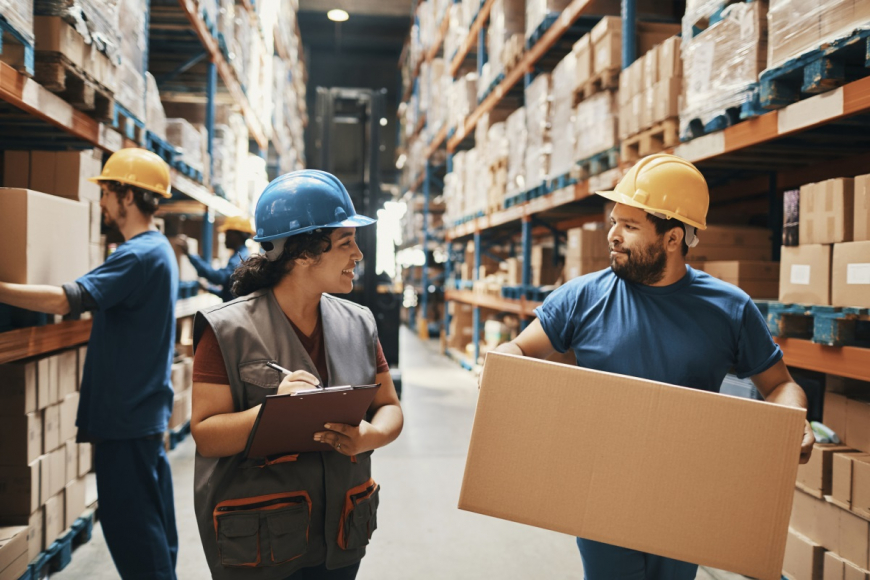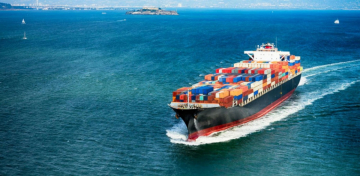American supply chains have been transformed - and EHS professionals must adapt to the compliance and business continuity implications.
Two decades ago, a tiny snowball started rolling. The sprawl of the American manufacturing industry was beginning to be lured to foreign shores in what would become one of the greatest waves of offshoring in modern history.
Now, supply chain dynamics are transforming again as global disruption sets in. What does this mean for EHS managers and their strategic planning as we move forward?
The Rush Towards Cost-Savings Nirvana
On the surface, it was a tempting notion. Cheaper labor, more efficient manufacturing, even looser environmental regulations — it was hard for an American company looking for an edge to turn down the offshore opportunities in countries like China, Vietnam and Indonesia. Manufacturers were able to reinvent their supply chains with cost-cutting measures while enjoying the revenue of the American market.
What began as a trend quickly became a sweeping movement. Offshoring became the standard — a cost-savings maneuver that businesses owed to their shareholders. And it worked. Consequences were theoretical and distant. Profit was actual and immediate. Companies choosing to maintain traditional domestic manufacturing facilities found themselves at a significant competitive disadvantage.
U.S. regulations facilitated the normalizing of the offshore movement, notably the 2001 Bush Administration's decision to grant permanent normal trading relations with China. As the rapid rush towards operational efficiency took its toll on America's job market, some companies began to notice the risks. EHS professionals found themselves with little direct control over manufacturing. All-important supply chains were at the whims of foreign politics and corruption. Labor issues were far beyond the reach of control. The dream began to show its seams, but still it held. Until now
The Return of the Domestic Supply Chain
In recent years, two dramatic shifts have caused businesses to reel in their supply chains, "onshoring" or “reshoring” them back to the U.S.
The First Shift: the Trump administration's trade policies. Trump ran with a focus on bringing back American jobs and set about to reshape trade deals like NAFTA to limit offshoring. He kept his campaign promise and started tightening his grip on foreign trade. Trump pressured companies to bring their operations back to the U.S. while challenging China on their trade policies. EHS professionals saw the incoming challenge of having to adapt to newly-domestic supply chains. Yet economic transformation in America was just beginning.
The Second Shift: the pandemic. Today, uncertainty has permeated throughout the global economy. Supply chains have been upended by factory closures, border closures, and a lack of consumer demand.
For EHS professionals, the unprecedented workload from fighting to mitigate the virus, along with the reshoring of American manufacturing, is undeniably daunting. The convergence of these two avenues of massive change means that issues of compliance and maintaining long-term continuity are doubly important.
Although balancing the demands of the new paradigm with traditional EHS responsibilities can seem impossible at times, at Antea Group, we know that is never the case.
Helping EHS Leaders and Teams Rise to the Challenge
EHS teams facing these hurdles aren’t alone. Antea Group has ample experience in helping organizations navigate the shifting tides of compliance and continuity. After all, when your company’s supply chain packs up and moves back home, there’s a lot to re-assess.
Different countries have different environmental restrictions and regulatory limits; there’s bound to be some adjustment period — especially when you consider that in America, regulations can vary by state. Not only are new compliance-related considerations at play, but there are also matters of optics and reputation: Do new vendors line up with your organization’s values and the expectations of your customers and stakeholders? Are unseen risks at play as vendor management goes through a period of upheaval?
We’ve been able to help companies adapt in a swift, measured, and effective way with our vendor audit services, where we help to ensure that prospective domestic vendors are aligned with a company’s vendor code of conduct. These evaluations can cover regulatory compliance as well as ESG (Environmental Social Governance) elements like human rights, labor standards, and business ethics.
In the fray of adaptation, EHS fundamentals don’t become any less important. Proper disposal can be hard to ensure when the supply chain is disrupted. For many verticals and industries — such as Manufacturing, Chemical, and Food & Bev — keeping a focus on considerations like EPR (End Product Recycling) is essential, even now. How does disposal factor into your company’s new manufacturing landscape? Antea Group’s experienced teams understand what it takes to help you succeed in this area, especially now.
We recognize that audits can feel like another thing to manage at a time where most EHS teams’ plates are full. But taking a proactive approach to auditing can make a huge difference in minimizing the overall burden. (In other words, covering your bases with vendors initially will often lead to much less “audit fatigue” down the line.)
Simply put: We’re here to help. Talk to us about developing a solid, future-proof vendor selection process as global supply chain dynamics shift, and how we can help you get out in front of any forthcoming EHS compliance issues. We’ll help you get a lay of the new landscape and ensure business continuity is disrupted minimally by evolving circumstances.
Visit our pages for more information on Auditing and Compliance, Global Operational Support, and Product Stewardship — or just reach out and drop us a line.
Want more news and insights like this?
Sign up for our monthly e-newsletter, The New Leaf. Our goal is to keep you updated, educated, and even a bit entertained as it relates to all things EHS and sustainability.
Get e-NewsletterHave any questions?
Contact us to discuss your environment, health, safety, and sustainability needs today.





